CATALYST
DENVER MUSEUM OF NATURE & SCIENCE ONLINE MAGAZINE
Museum Makes Another Incredible Dinosaur Discovery — This Time Underneath Our Parking Lot!
How Museum Researchers Found a Partial Dinosaur Bone More Than 700 Feet Below the Museum's North Lot in City Park
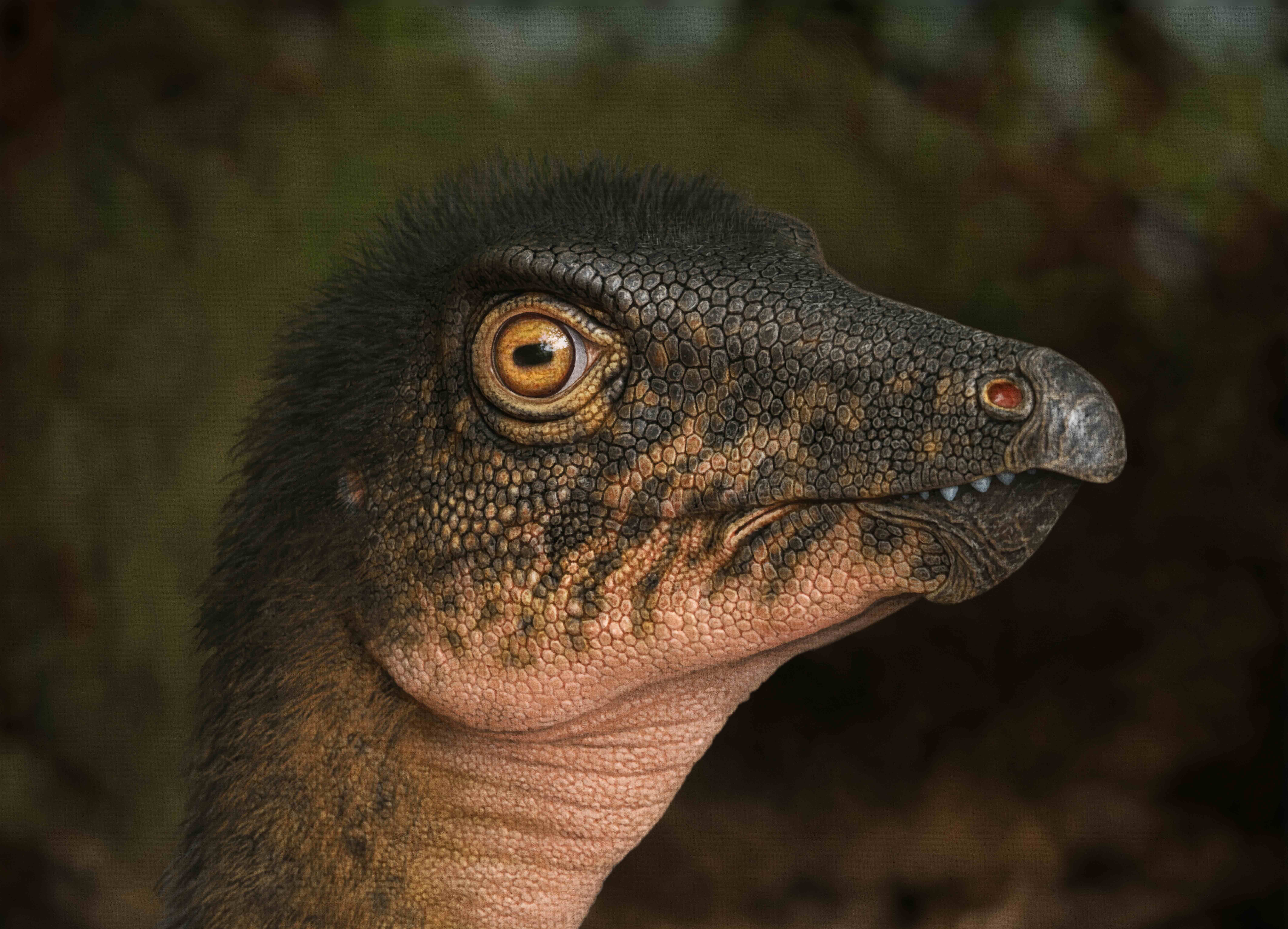
Image of a plant-eating ornithopod dinosaur, Thescelosaurus during the latest Cretaceous Period, nearly 67 million years ago. These around 10-12 foot long two-legged animals roamed the tropical swamps, forests and floodplains where Denver now stands. Their vertebrae are similar to the one found in the rock core deep below the Museum. (Photo/ Andrey Atuchin, Denver Museum of Nature & Science)
It all started with an innovative initiative to drill down hundreds of feet to explore for geothermal energy. But when you start drilling deep into the Earth's crust at a museum full of scientists, the urge to survey and study what's down there becomes irresistible.
The Museum kicked off a geothermal feasibility project in the spring of 2024 with a $250,000 grant from Gov. Jared Polis’ Geothermal Energy Grant Program at the Colorado Energy Office. By January 2025, two rigs showed up to drill test holes underneath the Museum's north parking lot, gathering localized data about thermal properties hundreds of feet down below the surface.
Read more: Denver Museum of Nature & Science Awarded Geothermal Energy Grant
Alongside the geothermal drilling project, the Museum conducted a scientific coring initiative to better understand the geology beneath City Park and the larger Denver Basin. The scientific core was drilled nearly 1,000 feet below the surface, passing through layers of gravel and sand deposited by the South Platte River before reaching ancient bedrock from the Late Cretaceous Period. While it wasn’t surprising that scientists uncovered fascinating geology all the way down, the scientific core extracted something that surpassed everyone’s expectations: a partial dinosaur bone dating back 67.5 million years!
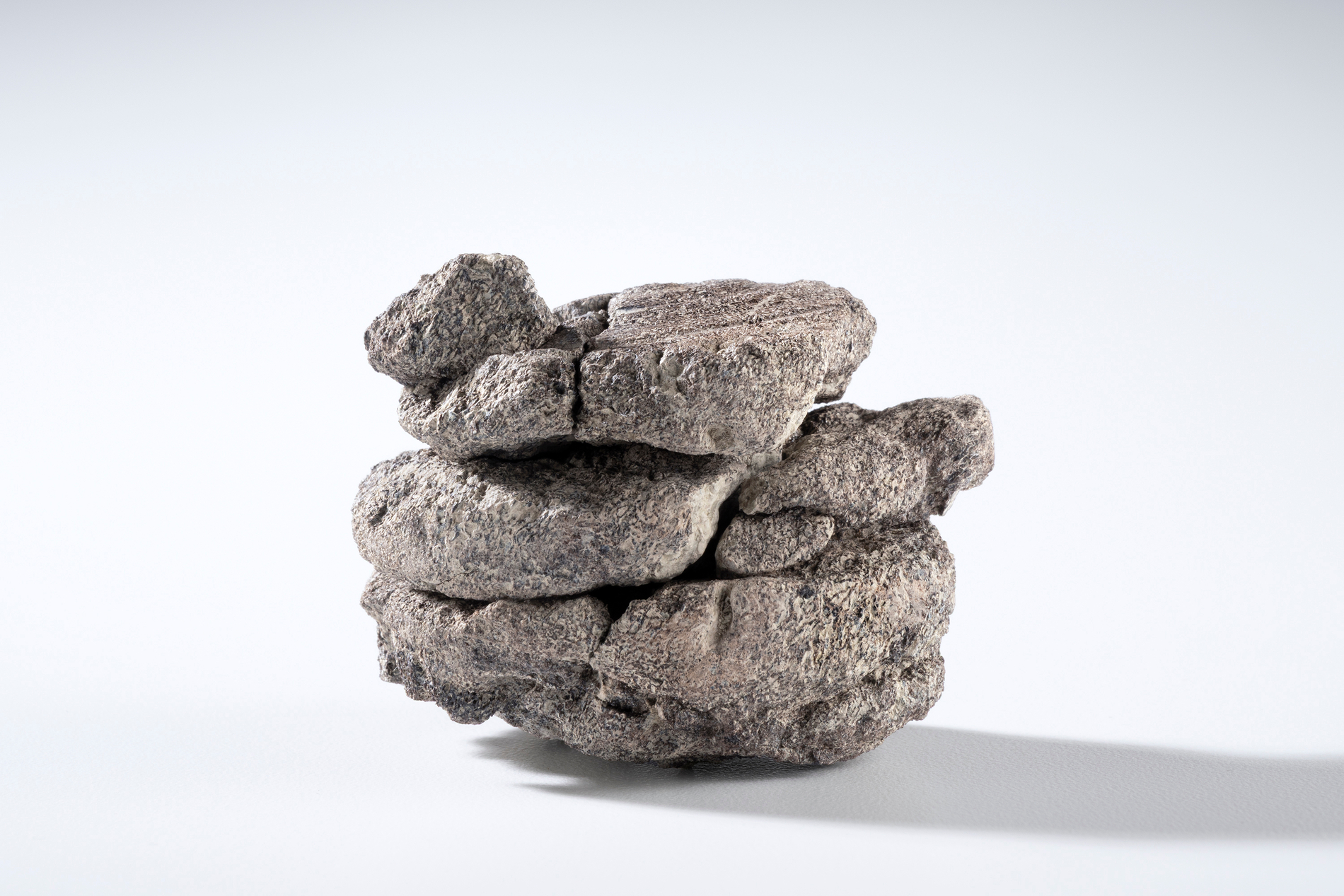
A portion of the dinosaur bone recovered from the scientific core — drilled 763 feet below the surface of the Museum’s parking lot in City Park. It has been identified by Museum paleontologists as the deepest and oldest dinosaur fossil ever found within the city limits. Specimen is housed at the Denver Museum of Nature & Science, courtesy of History Colorado, Office of the State Archaeologist. (Photo/ Rick Wicker)
This was a monumental discovery. Not only is it exceedingly rare to find a dinosaur fossil in a narrow drill core, but this fossil turned out to be the deepest and older dinosaur bone ever discovered within the Denver city limits.
“It’s basically like winning the lottery and getting struck by lightning on the same day,” said Dr. James Hagadorn, curator of geology at the Museum. “No one could have predicted that this little square foot of land where we started drilling would actually contain a dinosaur bone beneath it!”
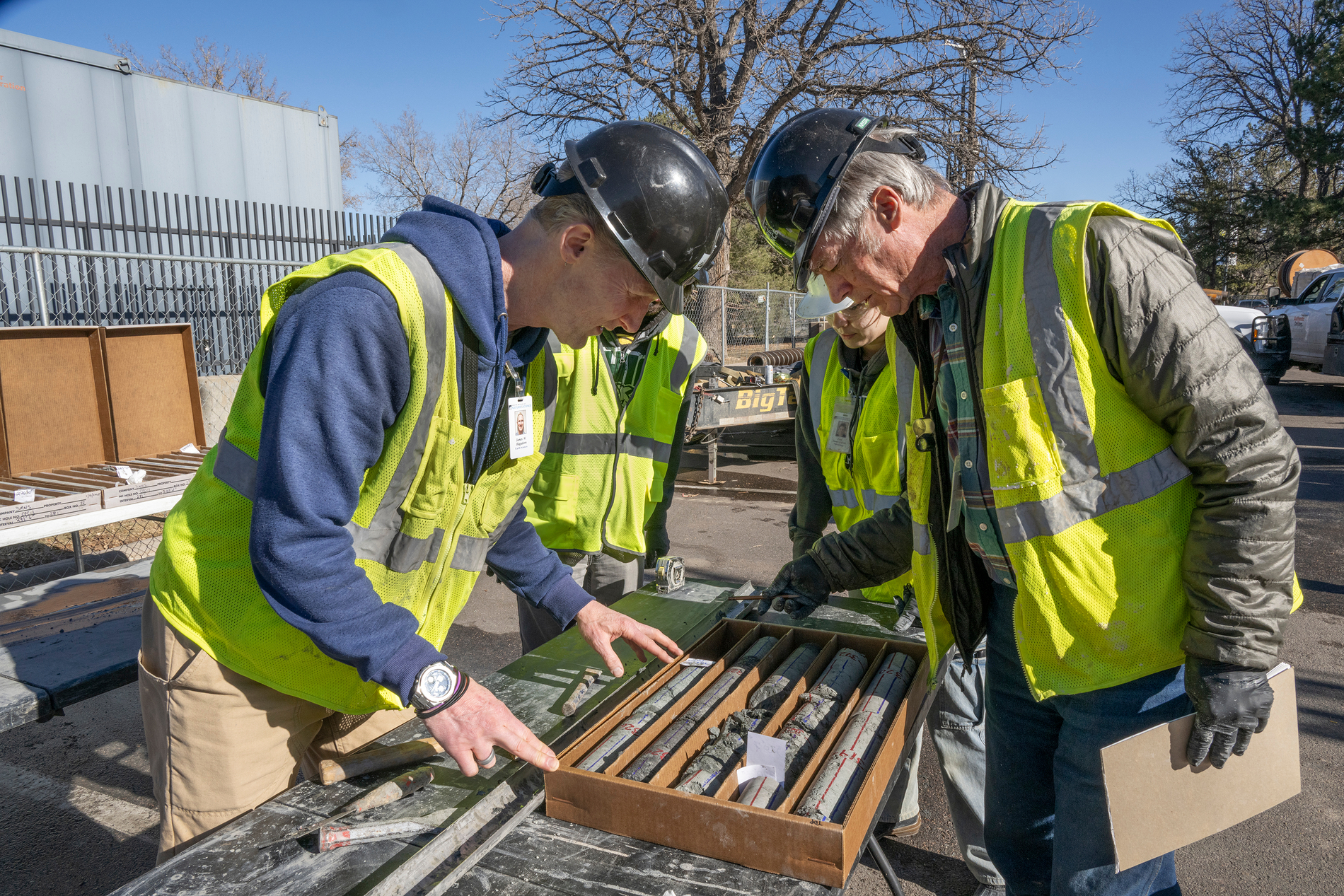
Earth Sciences Curator Dr. James Hagadorn and Research Associate Dr. Bob Raynolds examine scientific cores in the parking lot at the Denver Museum of Nature & Science in January, 2025. (Photo/ Rick Wicker)
The partial bone took some time to study before the scientists felt confident that they were indeed looking at a real animal fossil. Embedded in a layer of rock formed during the Late Cretaceous Period, the scientists identified the fossil as part of a vertebra from a plant-eating dinosaur, similar to a Thescelosaurus or Edmontosaurus. Such creatures lived in present-day Denver in the years before the catastrophic asteroid impact that ended the age of dinosaurs.
Dr. Patrick O’Connor, director of Earth & Space Sciences at the Museum, was part of the team that identified the fossil. “This may be the most unusual dinosaur discovery I have ever been a part of,” he said. “Not only is it exceptionally rare to find any fossil as part of a drilling project, but the discovery provided an outstanding collaborative opportunity.”
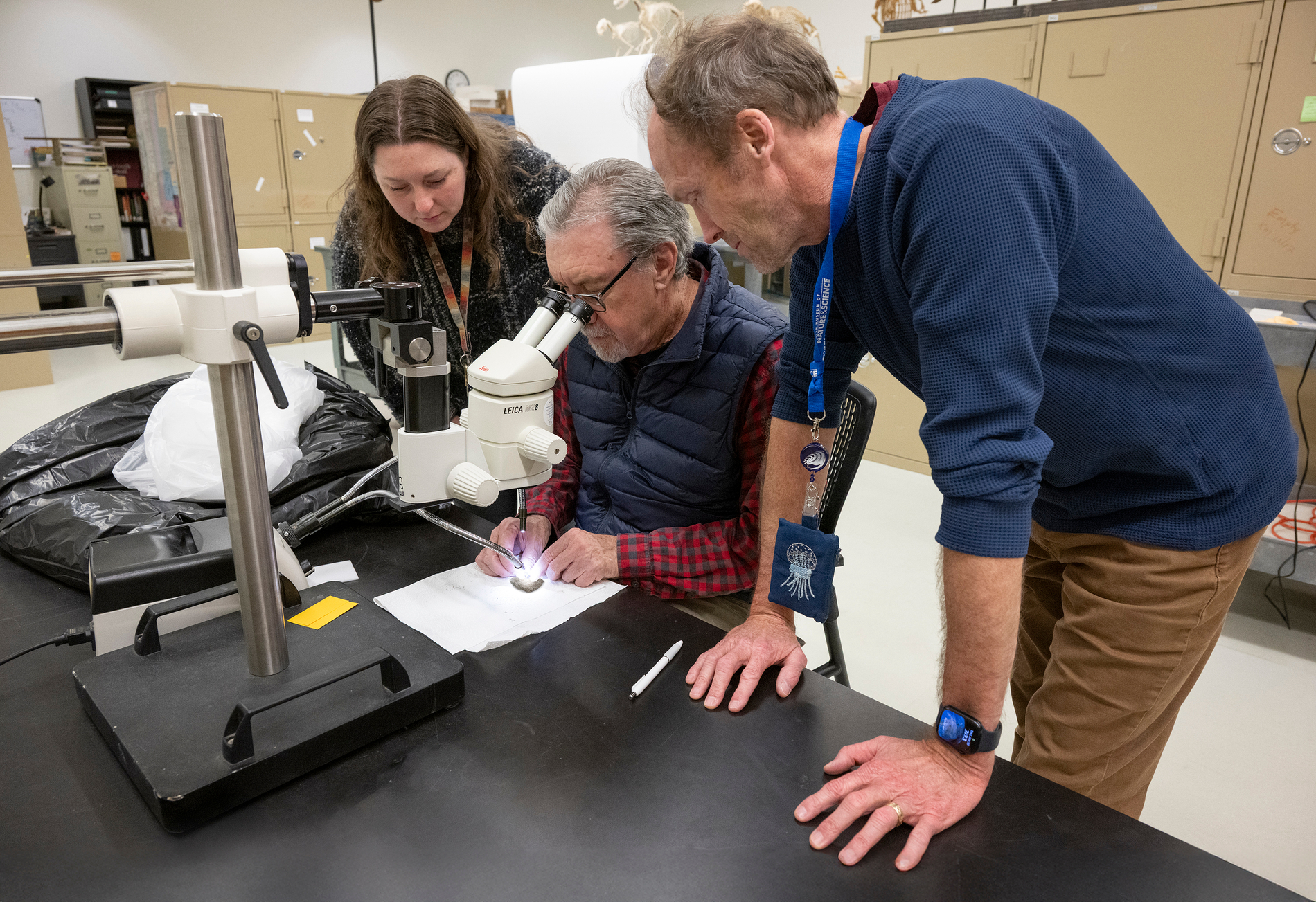
From left to right, report authors Dr. Gussie Maccracken, Dr. David Krause and Dr. Patrick O'Connor study the dinosaur fossil at the Denver Museum of Nature & Science. (Photo/ Rick Wicker)
Around 67 million years ago, during the late Cretaceous Period, the land that is now Denver looked vastly different. Instead of a bustling city, the area was covered in warm, rainy, tropical forests and swampy lowlands. Towering palm trees, thick vines, and lush undergrowth created a dense jungle-like environment in the flat floodplains nestled between rivers that drained the young, rising Rocky Mountains. These verdant clearings and wetlands teemed with life, from buzzing insects to massive dinosaurs.
Herds of Edmontosaurus, one of the most populous herbivores of the dinosaur era, migrated across the forested lands while the fearsome Tyrannosaurus rex stalked through the towering palms. Smaller dinosaurs like Thescelosaurus, agile and alert, darted among the vegetation, foraging and avoiding predators. When these animals died, many of their remains were buried by sediment carried by rivers and floods, eventually fossilizing in layers of rock.
These layers make up part of the Denver Basin that stretches beneath the metro area and links the Museum’s recent fossil discovery to other world-renowned fossil sites in Colorado, such as Corral Bluffs near Colorado Springs and North Table Mountain near Golden. The partial dinosaur bone found in a core sample beneath the Museum provides a direct glimpse into this buried world, preserved for millions of years beneath the city.
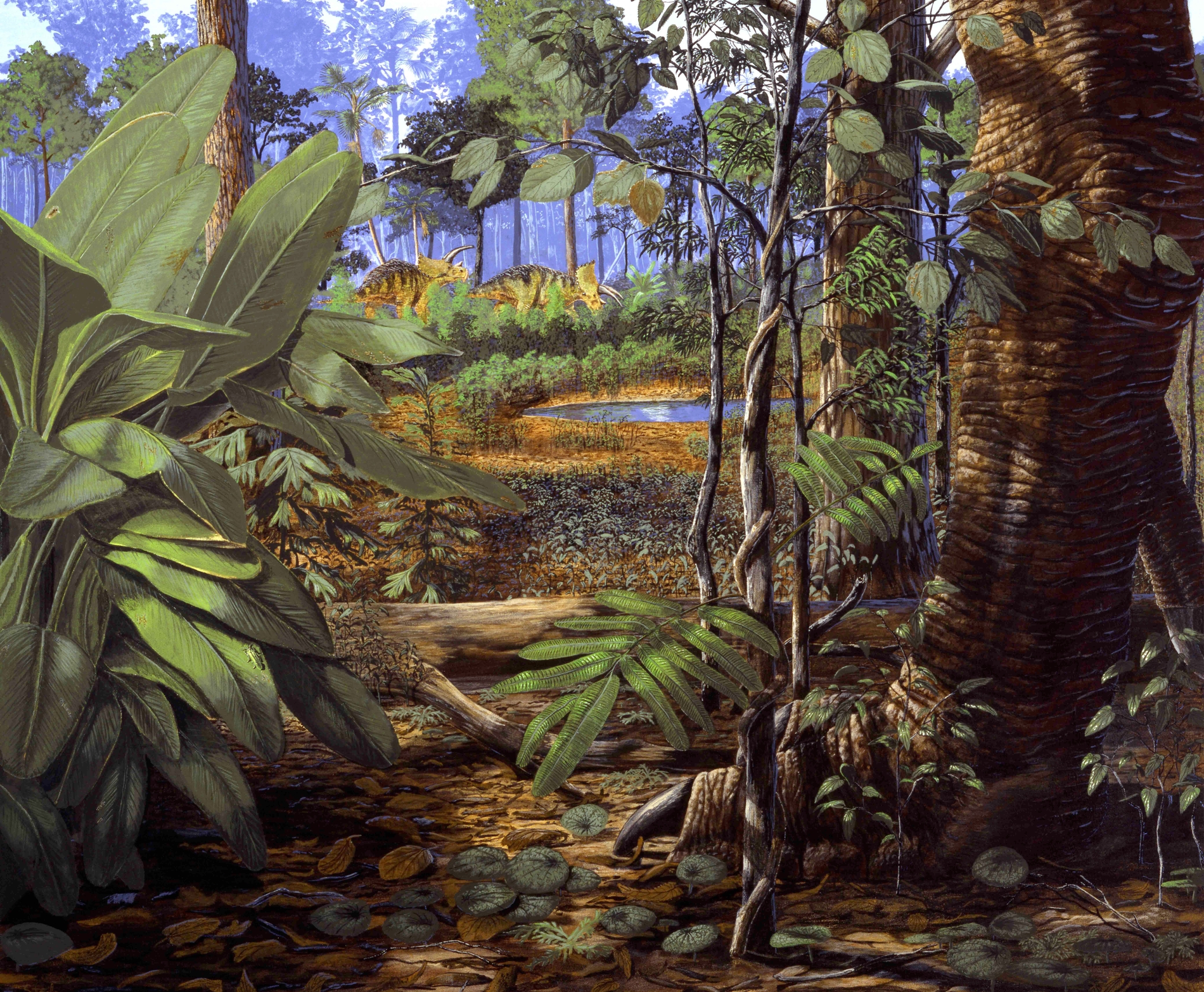
Cretaceous Period, about 67 million years ago. In between the palm trees, climbing vines and ginger plants, this ecosystem was inhabited by several large animals, including plant-eating dinosaurs like Triceratops in the background and meat-eating animals like the Tyrannosaurus rex, whose leg is in the foreground. (Photo/ Gary Stabb, Johnson and Raynolds)
For Earth Sciences Research Associate Dr. Bob Raynolds, the project was an extraordinary experience: “In my 35 years at the Museum, we’ve never had an opportunity quite like this — to study the deep geologic layers beneath our feet with such precision. That this fossil turned up here, in City Park, is nothing short of magical.”
The fossil analysis of the partial dinosaur bone was led by Museum postdoctoral scholar Dr. Holger Petermann with the contribution of many others from the Museum’s earth sciences department. Their research was just published in the journal Rocky Mountain Geology.
Do you want to see this amazing fossil? For a limited time, come down to the Museum to see for yourself this incredible piece of Denver’s ancient past. Our exhibits team has put together a display in the “Discovering Teen Rex” exhibition where the fossil specimen can be viewed by the public alongside one of the most incredible dinosaur discoveries of all time, an adolescent T. rex found by three young boys in North Dakota!





